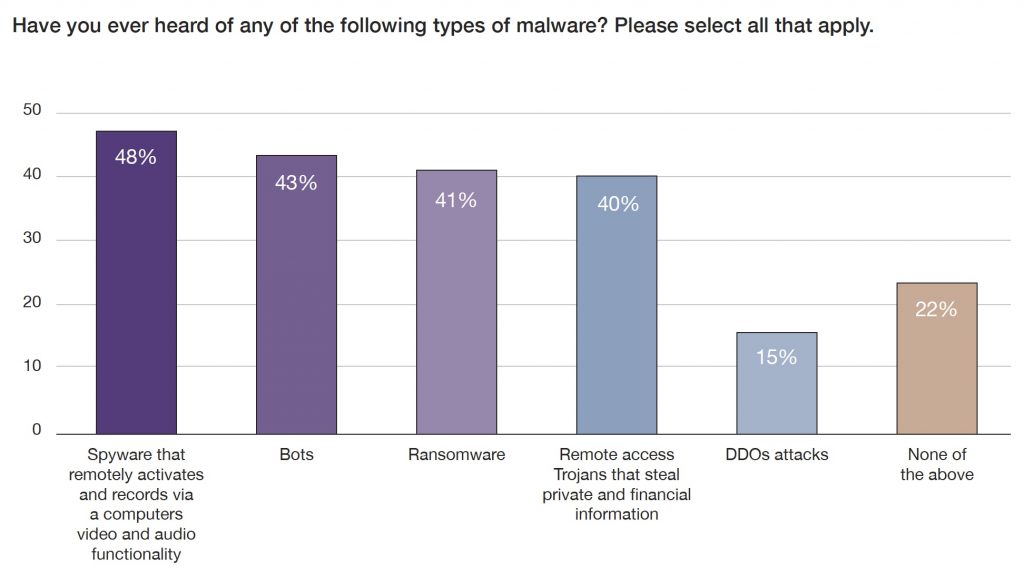Consumers aged 18-24 were more likely to access piracy websites but were the least aware of the associated cyber risks, according to a malware and phishing study by the Institute of Data Science of the Indian School of Business (ISB) presented and released during a March anti-piracy seminar in Mumbai. The report was commissioned by the Alliance for Creativity and Entertainment (ACE).
Consumers surveyed overall thought that piracy sites had the highest risk of exposure to malware (59%), higher than if they clicked on adult industry advertisements (57%) or on gambling ads (53%), and twice as high as the risk from mainstream Web sites.
However, by using empirical analysis, the researchers found that the actual relative risk of exposure ranges to be many times higher than the risks perceived by consumers: 10.5x for top and mid-range piracy sites, 15.5x for top scam sites, and 9x for mid-range scam sites, compared with a set of control sites.
Types of malware
The report defines malware as “any software or code designed to disrupt, damage, gain unauthorized access to, or exploit compter systems, networks or user devices … created by cybercriminals with the intent to steal information, compromise privacy or cause harm to individuals or organizations.”

In addition, the report identified adware as a form of malware that presents unwanted or fraudulent ads, often directing consumers to volunteer personal information or to download further malware.
Impact of piracy
Piracy of copyrighted content in India was valued by the consulting firm EY (the former Ernst & Young) to be more than US$3 billion in the year 2022, which has an impact on the resources available to produce further high-quality programming and discourages creativity, according to the ISB study.
Penetration by malware associated with piracy sources can result in data theft, identity theft, keylogging, remote access, identity spoofing, and phishing attacks.
One example cited in the report was of a document stealer associated with a movie download, which searched the victim’s hard drive for Word documents, Excel spreadsheets and PDF files and emailed them to the attacker.
Key recommendations
The report lists several recommendations to help reduce the risks associated with piracy:
- Urge the Government ot place a higher priority to digital copyright crimes in India, and give law enforcement authorities the knowledge and the tools to provide deterrents and bring offenders to justice
- Conduct consumer awareness, training and education campaigns that are attuned to different demographics, based on their levels of risky behavior
- Establish uniform cyber crime and enforcement procedures, including IP crimes and Internet piracy; at the state level across India.
Methodology
To measure consumer perceptions, the researchers surveyed 1,037 Indian consumers in June 2023, aged 18 years and above. A questionnaire was developed by YouGov to assess consumer knowledge and engagement with piracy, their understanding of malware, and the links between the two. The survey questionnaire is included in the report.
To measure empirical risk, the researchers used the Google VirusTotal tool, which visits Web sites to detect malware, phishing, suspicious, malicious or spam content. It uses matching against a database from more than 70 anti-virus vendors and a sandbox to execute suspected malicious code.
A list of piracy sites popular with Indian consumers was provided by ACE.
Further reading
Indian School of Business (ISB) study finds piracy sites in India pose greater consumer risk than adult industry and gambling ads. Press release. March 22, 2024. Alliance for Creativity and Entertainment (ACE)
The Piracy Malware Nexus in India: A Perceptions and Experience and Empirical Analysis. Report (PDF). March 11, 2024. Dr. Paul A. Watters, Cyberstronomy Pty Ltd and Adjunct Professor of Cybersecurity at La Trobe University in Melbourne, with Dr. Shruti Mantri, and Dr. Manish Gangwar, both of ISB Institute of Data Science, Indian School of Business.
Why it matters
As is the case worldwide, India has seen an explosion of entertainment programming that appeals to consumers within their home country and around the world. “Bollywood” has become the worlds’s largest film industry, when measured by the number of films produced annually. Different regions of the country have their own film industries.
Digital advertising and streaming services are legion, with global platforms like Disney+ Hotstar, and Amazon Prime Video, plus many regional platforms












